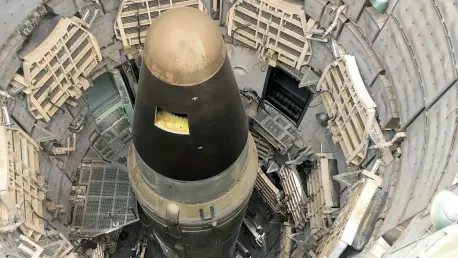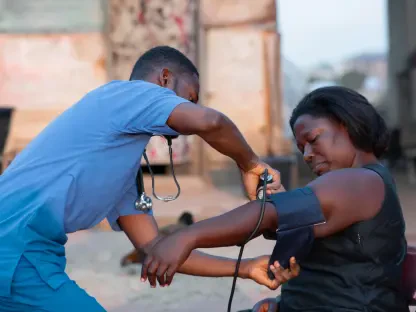Short introductionI’m thrilled to sit down with Dr. James Maitland, a renowned expert in military health and environmental safety with decades of experience studying the health risks faced by service members in high-stakes environments. Today, we’re diving into a critical issue affecting nuclear missile workers—specifically, the alarming cancer diagnoses among those who have served at missile bases and the growing concerns about workplace safety. Dr. Maitland brings a wealth of knowledge on how environmental factors at these facilities might be linked to serious health outcomes, offering insights into past oversights, current investigations, and the path forward for affected veterans.
Can you share some background on the health challenges faced by nuclear missile workers, particularly those who’ve spent time in launch control centers?
Certainly, Lukas. Nuclear missile workers, often called missileers, operate in incredibly unique and demanding environments, especially in underground launch control centers at bases across the Northern Rockies and Great Plains. These folks have been raising concerns for years about potential links between their service and serious health issues, notably cancers like non-Hodgkin lymphoma. Many have worked in confined spaces with limited ventilation, surrounded by older equipment and materials that we now know could contain toxic substances. The suspicion of a connection between their workplace and illness isn’t new—it’s been simmering in their community for decades, and it’s heartbreaking to see so many affected.
What struck you most about the personal stories of missileers who’ve been diagnosed with cancer after their service?
What hits hardest is the sheer number of personal accounts and the timing of their diagnoses. I’ve heard from veterans who discovered their illnesses—often aggressive cancers—years after serving, sometimes in clusters with their peers from the same base or era. The emotional toll is immense; imagine running into a former colleague at a memorial, only to learn you both have similar diagnoses on the same day. It’s not just a statistic—it’s a shared trauma. These stories highlight a pattern that can’t be ignored and fuel the urgency to dig deeper into what they were exposed to during their service.
How would you describe the working conditions in these launch control centers based on what we know?
From reports and veteran accounts, the conditions in these centers were often far from ideal, especially in earlier decades. We’re talking about underground bunkers where missileers pulled long shifts, sometimes with poor air circulation. There’ve been mentions of burning classified materials indoors, which could release harmful fumes, and concerns about contaminated water supplies. Add to that potential exposure to chemicals from old equipment, and you’ve got a recipe for health risks that weren’t fully understood or addressed at the time. It paints a troubling picture of an environment that prioritized mission readiness over long-term safety.
There’s been talk of specific toxins like PCBs and benzene as possible contributors to these health issues. What can you tell us about their presence at missile bases?
PCBs, or polychlorinated biphenyls, and benzene are both known hazards that have been flagged in studies of these bases. PCBs were used in electrical components like circuit breakers and screens in older missile control systems before they were banned in the late ‘70s due to their toxicity and links to cancer. Benzene, often tied to fuel fumes or smoke, is another carcinogen that’s been identified as a risk factor at these sites. What’s concerning is that many workers weren’t aware of these dangers during their service, nor were there always adequate protective measures in place. Recent investigations are finally starting to map out where and how these exposures might have occurred, but for many, that awareness comes too late.
How do you view the Air Force’s past studies from the early 2000s that deemed these workplaces safe, given what we’re learning now?
Looking back, those studies from 2001 and 2005 at bases like Malmstrom seem overly optimistic and limited in scope. They concluded the launch control centers were safe, but they didn’t account for long-term health data or a broad enough sample of personnel. I think they underestimated the cumulative impact of environmental exposures over time. Many missileers felt those findings didn’t match their lived experiences—some were already noticing health issues among their peers. It’s a classic case of science catching up with reality, and thankfully, current efforts are taking a harder, more comprehensive look at the problem.
What are your thoughts on the ongoing Air Force investigation into cancer rates among missile workers?
The current investigation, which spans multiple bases and aims to wrap up by 2025, is a step in the right direction. It’s one of the most extensive efforts to date, covering thousands of personnel and analyzing specific cancer types alongside environmental data. However, I share the concern of many veterans that the scope might be too broad, potentially diluting evidence of specific clusters. There’s also the challenge of incomplete historical exposure records, which makes it tough to draw definitive links. While preliminary results haven’t shown statistically elevated cancer deaths, the data isn’t fully in yet, and I think we need to approach these early findings with caution and a commitment to transparency.
How significant are advocacy efforts and legislative proposals in addressing these health concerns for missileers?
Advocacy groups and legislative moves are absolutely crucial. Organizations supporting missileers have been instrumental in bringing personal stories and data to light, pushing for recognition and benefits through the VA system. Proposals in Congress, like amendments to defense bills for independent reviews or regular deep cleanings of facilities, show that lawmakers are starting to listen. These efforts not only validate the struggles of affected veterans but also pressure the military to prioritize health and safety reforms. Without this grassroots and political momentum, I fear many of these issues would remain buried under bureaucracy.
What is your forecast for the future of health and safety measures at nuclear missile bases?
I’m cautiously optimistic about the future, Lukas. The Air Force’s current investigation and the push for accountability could lead to meaningful changes—think better air quality systems, stricter monitoring of environmental hazards, and updated training on toxic exposures. With new missile systems like the Sentinel coming online, there’s an opportunity to design safer facilities from the ground up. However, the pace of change and the commitment to supporting already-affected veterans will be key. I hope we see a cultural shift where the health of our service members is treated with the same urgency as national security, ensuring no one else has to fight for recognition of service-related illnesses down the line.









